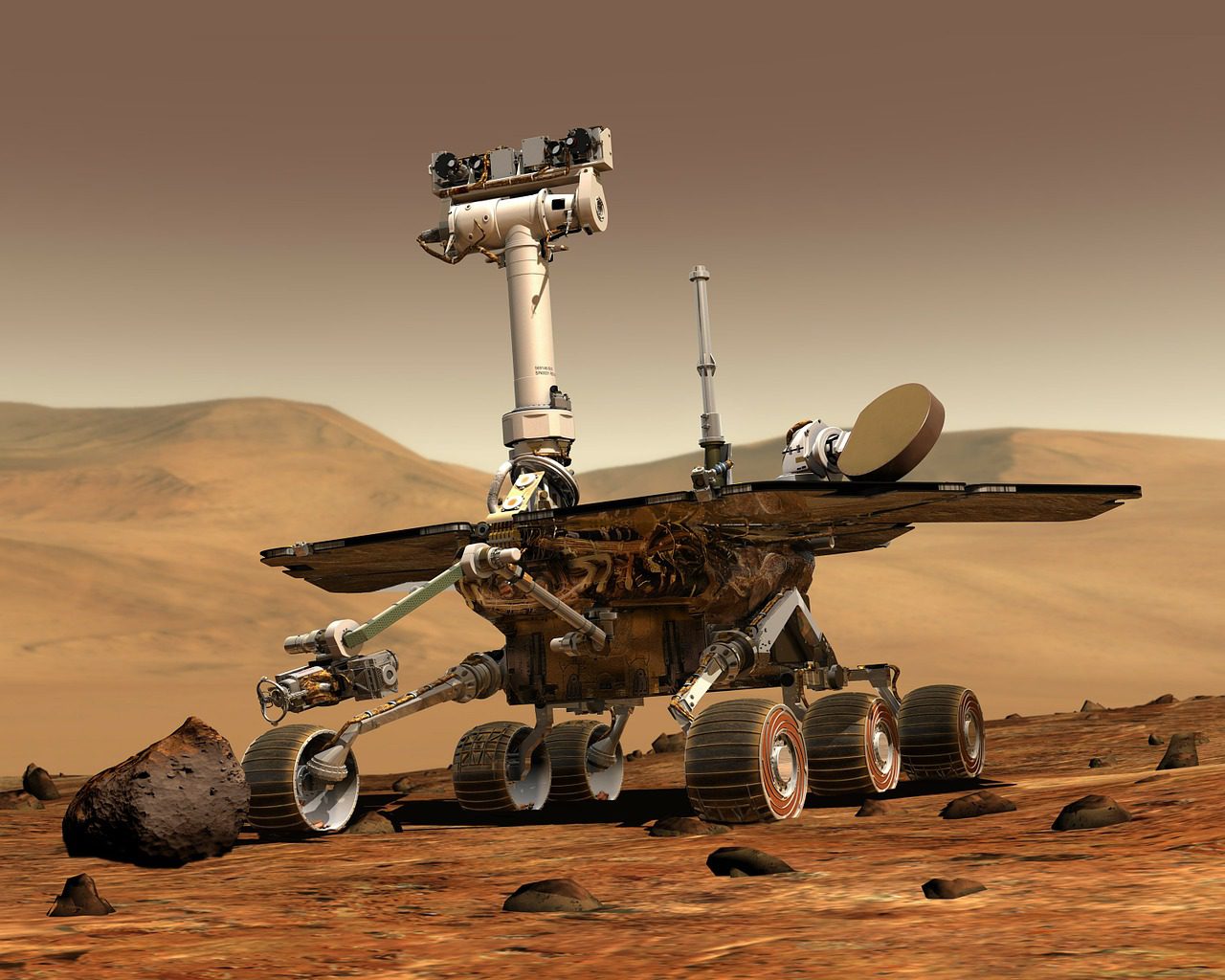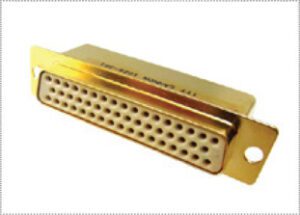Connectors for Space Applications Require Radiation-Resistance
When designing and implementing connectivity solutions for use in space applications, one crucial consideration is the effect radiation will have on electronic connectors and cables.

Three separate but interrelated aspects of this come into play: the radiation itself, atomic oxygen, and outgassing.
Space is a unique type of harsh environment. Not only is the combination of conditions unique, but once a spacecraft has launched, the ability to make repairs or changes to equipment and materials is essentially non-existent. All components must be able to withstand the environment of space and perform as intended indefinitely. In addition to functioning despite temperature extremes, shock, and vibration, connectivity solutions must resist the damaging effects of radiation.
Space Radiation vs. Earth Radiation
According to NASA, space radiation is comprised of particles trapped in the Earth’s magnetic field, particles propelled into space by solar flares, and high-energy protons and heavy ions from outside our solar system (galactic cosmic rays). These are all ionizing (high energy) radiation, which occurs as atoms accelerate to nearly the speed of light in interstellar space. The electrons are stripped away until, eventually, only the nucleus of the atoms remains. Ionizing radiation includes alpha particles (a helium atom nucleus moving at very high speeds), beta particles (a high-speed electron or positron), gamma rays, X-rays, and galactic cosmic radiation (GCR) from space.
Most of Earth’s radiation comes from the sun, mainly in the form of visible, infrared, and ultraviolet radiation (UV), but it can also come from radioactive elements in the Earth’s crust. In addition, radiation is created from human-made sources such as microwaves, light bulbs, cell phones, radios, and medical diagnostic equipment. Non-ionizing (low energy) radiation does not have the energy to remove electrons. It includes radio frequencies, microwaves, infrared, visible light, and ultraviolet (UV) light.

Available from PEI-Genesis, ITT Cannon’s high-performance D-Sub connectors for space applications were derived from MIL-DLT-24308 standards and meet NASA and SAE standards. These high-reliability connectors meet stringent tests for outgassing and residual magnetism, and come in a wide range of standard to double density configurations for cable-to-cable and printed circuit board applications. The DNM and DNMB connector series are non-magnetic interconnects suitable for space, launch system, military, and aerospace applications.
The differences in radiation that exists on Earth and radiation in space affect how electronic devices are best protected. Shielding can protect connector components from non-ionizing radiation. Safeguarding against ionizing radiation, however, is much more difficult. By removing ions from the atoms of material it passes through, ionizing radiation changes the make-up of that material, resulting in significant damage. Further damage can be caused by secondary particles propelled into motion by the primary radiation particle.
Galactic cosmic radiation (GCR) is one of the main types of ionizing radiation that impacts spacecraft. GCR comes from within the Milky Way galaxy but outside our solar system. GCR particles approach the speed of light and can pass through a spacecraft, and even through the skin of an astronaut.
From the moment a spacecraft leaves the Earth’s surface, it is besieged by radiation. Radiation in space often travels in clouds that can originate from solar bursts, deeper space collisions, or emerge from deep holes. They include items like, electrons, protons, heavy ions, and gamma rays. Clouds of charged materials are often from torn apart elements leaving these highly charged particles looking to be rebonded into their original natural state. The farther the spacecraft travels from Earth and its protective atmosphere, the more radiation levels increase, so all materials used must be designed to preserve their durability and reliability when exposed to radiation. Connectors external to the spacecraft are at the greatest risk. Some form of radiation-resistant insulator must be incorporated into the design of all cable and connector components used in space.
Radiation protection begins with an application analysis and decision on what needs radiation protection and what may be okay without it. The two most used radiation protection schemes are reflection and absorption. Certain metals, such as pure tin, cadmium, and zinc, are avoided because of mechanical reactions, that is they don’t reflect or absorb the radiation like highly reflective metals such as gold or stainless-steel. Plastics are also at risk of damage from radiation. Materials used in connectors and cables must, therefore, be rated for radiation-resistance. One example of such an insulator is polyphenylene sulfide (PPS), a high-performance plastic that is highly resistant to gamma irradiation. Polyimide resin insulation material used in a tape or jacket also resists radiation at a level suitable for space applications. Stainless steel shells and polyether etherkeytone (PEEK) insulators are another example of radiation hardening. Also known as “rad hard.” Radiation hardening is the process of making electronic components resistant to damage from ionizing radiation. In some cases, containing connectors within a rad-hard package provides enough protection so that the connectors themselves do not need to be rad hard, said Bob Stanton, Omnetics Connector Corporation.
Atomic Oxygen
Interconnects used on the exterior of spacecraft are vulnerable to damage and destruction from atomic oxygen (ATOX), as well as from radiation. Atomic oxygen, O, is made up of one atom of oxygen, in contrast to O2 (what we breathe) which is two oxygen atoms, and O3 (ozone), which is three oxygen atoms. ATOX is highly reactive and does not exist naturally on the Earth’s surface for long. It does, however, exist in space where there is lots of ultraviolet radiation, and it is particularly problematic for spacecraft in low Earth orbit (LEO) where the atmosphere is comprised of about 96% ATOX.

Radatox-insulated wires and cables from Axon’ Cable are resistant to atomic oxygen and radiation.
Axon’ Cable’s proprietary Radatox-insulated wires and cables are 10 times more resistant to ATOX and up to 40% lighter-weight than typical perfluoropolymers such as FEP, PFA, and PTFE. Compared to similar-thickness polyimide tapes, they are 100 times more ATOX-resistant, twice as flexible, and resistant to more than 200 Mrad of radiation. Radatox insulating material can also be used for flat flexible cables (FFC).
Outgassing
The third potential environmental hazard for interconnects on spacecraft is outgassing —the release over time of vapor or gas known as volatile organic compounds (VOCs) from materials like elastomers and plastics. Outgassing occurs with the lack of atmospheric pressure in the vacuum of space. Once released, VOCs cause contamination by creating a film over connectors, cables, and wires, as well as lenses, mirrors, and windows. That film cannot be removed and compromises the equipment’s performance. To prevent VOCs, during production connectors are baked at high temperatures in a vacuum-sealed oven. This allows for the release the VOCs before the components enter space.

High-reliability Combo-D and Standard Density D-Sub connector series from Positronic, assembled by PEI-Genesis.
PEI-Genesis worked with Positronic to find connector solutions for a customer in need of space-qualified connectors. Three series of D-Sub connectors, SND, SCBM, and SCBD, met the necessary criteria, including conforming to outgassing test requirements (ASTM E-595 and NASA-RP-1124).
See more space-grade interconnects in our Product Roundup.
To learn more about the Preferred Suppliers mentioned in this article, visit the profile pages for Axon’ Cable and PEI Genesis.
Like this article? Check out our other Harsh Environment and How to Specify articles, our Mil/Aero Industry articles, and 2022 Article Archives.
Subscribe to our weekly e-newsletters, follow us on LinkedIn, Twitter, and Facebook, and check out our eBook archives for more applicable, expert-informed connectivity content.
[/fusion_text][/fusion_builder_column][/fusion_builder_row][/fusion_builder_container]
- Sealing Success: Overmolding for More Secure Connections - April 23, 2024
- Medical Cable Assemblies Product Roundup - April 23, 2024
- Mezzanine Connectors Product Roundup - April 16, 2024





